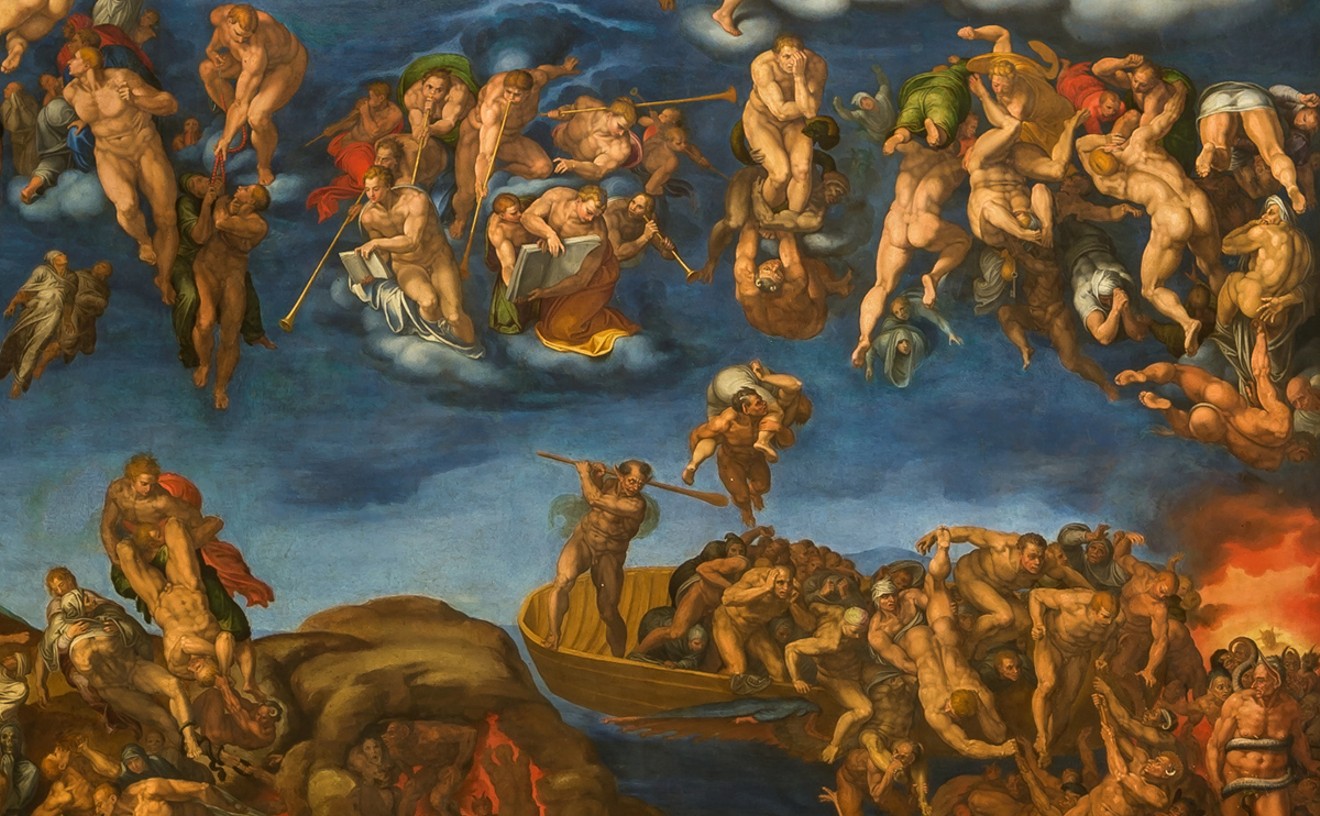He just didn't get it that Michelangelo's genius was that he could paint the human form in so many different positions and, next thing he knew, the artist had painted da Cesena into the hell corner of the fresco (along with the rest of the damned) as Minos, judge of the underworld, sporting foolish donkey ears and wrapped in a snake that was targeting his groin. When he tried to tattle and have it removed, the Pope told him something to the effect of, "Sorry, I have no jurisdiction in hell."

Attributed to Jacopino del Conte, Portrait of Michelangelo (1475–1564), probably c. 1544, oil on wood, The Metropolitan Museum of Art, New York.
Photo courtesy of the Museum of Fine Arts, Houston
We can see that copy — painted by Marcello Venusti — at the Museum of Fine Arts, Houston, in "Michelangelo and the Vatican: Masterworks from the Museo e Real Bosco di Capodimonte, Naples." There's also an engraving by Giorgio Ghisi that depicts the original nudity and it's interesting to know that, at the time, patrons could purchase sections of the 10-sheet engraving and reassemble the work at home.
These objects are displayed in a grand hall that includes a replica of the ceiling of the Sistine Chapel suspended above. For those who fear cramped necks, the curators have installed a pair of upward-facing mirrors that seem to sharpen and magnify the colorful masterpiece that shows hundreds of scenes from the Bible, including Adam and Eve, the Great Flood, stories from the Book of Genesis, and the ancestors of Christ.
The most amazing narrative in the "Michelangelo and the Vatican" exhibition is the legacy of Farnese, a voracious collector of antiquities who later became Pope Paul III. He was controversial in that he took a mistress, fathered children, and was a strong believer in nepotism. But it is exactly because of his appreciation for the arts and the passing of property down to subsequent generations that the amazing Farnese Collection has been preserved at the Museo e Real Bosco di Capodimonte in Naples.
The five-room exhibit, which unfolds like a book and is supplemented by MFAH's holdings (one of which was acquired just two weeks before the opening), features paintings, drawings, cartoons (large-scale drawings done in advance before painting a fresco), sculpture and prints.

Michelangelo Buonarroti, with the carpenters of the Fabbrica di San Pietro, Model of the Vault of the Chapel of the King of France in Saint Peter’s Basilica, late 1556–early 1557, limewood and other woods, Fabbrica di San Pietro, Vatican City.
Photo courtesy of the Museum of Fine Arts, Houston
Also fascinating is an 180 degree video of the Pauline Chapel within the Apostolic Palace, Vatican City (a stop traditionally not on the itinerary for visitors) and a cartoon fragment by Michelangelo that was used in preparation for the painting of The Crucifixion of Saint Peter in the Pauline Chapel.
Michelangelo's prowess in sketching the human form resulted in his also creating drawings for other painters, and visitors will see Michelangelo's Cartoon of Venus Kissed by Cupid side by side with a later oil painting of the scene by Hendrick van der Broecke, Venus and Cupid.
There are several other exciting exhibits concurrently at MFAH and they've arranged for some deeply discounted special offers for those who have not yet ponied up for a membership. Be sure to check out "Peacock in the Desert: The Royal Arts of Jodhpur, India," a magnificent explosion of color, wealth and pageantry (through August 19).
"Michelangelo and the Vatican: Masterworks from the Museo e Real Bosco di Capodimonte, Naples" runs through June 10, 2018, 10 a.m. to 5 p.m. Tuesdays and Wednesdays, 10 a.m. to 9 p.m. Thursdays, 10 a.m. to 7 p.m. Fridays and Saturdays, 12:15 to 7 p.m. Sundays, Museum of Fine Arts, Houston, 1001 Bissonnet, 713-639-7300, mfah.org, free to $23.


